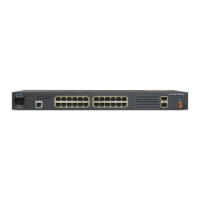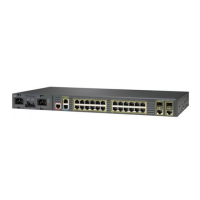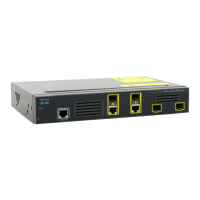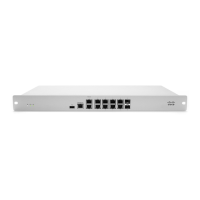35-103
Cisco ME 3400 Ethernet Access Switch Software Configuration Guide
OL-9639-07
Chapter 35 Configuring IP Unicast Routing
Configuring Protocol-Independent Features
Configuring Policy-Based Routing
You can use policy-based routing (PBR) to configure a defined policy for traffic flows. By using PBR,
you can have more control over routing by reducing the reliance on routes derived from routing
protocols. PBR can specify and implement routing policies that allow or deny paths based on:
• Identity of a particular end system
• Application
• Protocol
You can use PBR to provide equal-access and source-sensitive routing, routing based on interactive
versus batch traffic, or routing based on dedicated links. For example, you could transfer stock records
to a corporate office on a high-bandwidth, high-cost link for a short time while transmitting routine
application data such as e-mail over a low-bandwidth, low-cost link.
With PBR, you classify traffic using access control lists (ACLs) and then make traffic go through a
different path. PBR is applied to incoming packets. All packets received on an interface with PBR
enabled are passed through route maps. Based on the criteria defined in the route maps, packets are
forwarded (routed) to the appropriate next hop.
• If packets do not match any route map statements, all set clauses are applied.
• If a statement is marked as permit and the packets do not match any route-map statements, the
packets are sent through the normal forwarding channels, and destination-based routing is
performed.
• For PBR, route-map statements marked as deny are not supported.
For more information about configuring route maps, see the “Using Route Maps to Redistribute Routing
Information” section on page 35-99.
You can use standard IP ACLs to specify match criteria for a source address or extended IP ACLs to
specify match criteria based on an application, a protocol type, or an end station. The process proceeds
through the route map until a match is found. If no match is found, normal destination-based routing
occurs. There is an implicit deny at the end of the list of match statements.
If match clauses are satisfied, you can use a set clause to specify the IP addresses identifying the next
hop router in the path.
For details about PBR commands and keywords, see the Cisco IOS IP Command Reference, Volume 2 of
3: Routing Protocols, Release 12.2. For a list of PBR commands that are visible but not supported by the
switch, see
Appendix C, “Unsupported Commands in Cisco IOS Release 12.2(50)SE.”
PBR Configuration Guidelines
Before configuring PBR, you should be aware of this information:
• Multicast traffic is not policy-routed. PBR applies to only to unicast traffic.
• You can enable PBR on a routed port or an SVI.
• The switch does not support route-map deny statements for PBR.
• You can apply a policy route map to an EtherChannel port channel in Layer 3 mode, but you cannot
apply a policy route map to a physical interface that is a member of the EtherChannel. If you try to
do so, the command is rejected. When a policy route map is applied to a physical interface, that
interface cannot become a member of an EtherChannel.
• You can define a maximum of 246 IP policy route maps on the switch.

